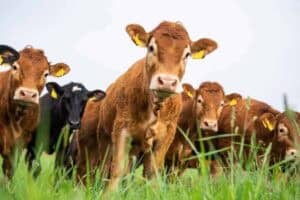The year combined ample crop harvest with higher prices, thus boosting farmers’ incomes.

The year 2021 can be characterised as one of the rarest, yet possibly most beneficial, for South African farmers, particularly in grains and oilseeds.
The year combined ample crop harvest with higher prices, thus boosting farmers’ incomes. Ordinarily, a year of large harvests tends to lead to lower commodities prices and farmers’ profits are squeezed.
But for 2020 and 2021, commodity prices have remained elevated, both in South Africa and globally.
The growing demand for agricultural products, specifically oilseeds in China and India, combined with lower palm oil production in parts of Asia and a poor harvest in South America, were among the key reasons for higher global agricultural commodity prices.
As an integral part of the global agriculture ecosystem, South Africa was influenced by the global price trends, mirrored in the domestic prices.
The farmers who benefitted from this windfall saw their finances improve and began spending on agricultural equipment, among other things.
For example, SA’s total tractor sales for the first 11 months of this year reached 6 980 units, up by 25% year-on-year. Combine harvester sales increased by 38% over the same period, with 250 units sold.
Notably, 2020 was also a good year in South Africa’s agricultural machinery sales, so surpassing it means we are witnessing good momentum. In 2020, tractor sales amounted to 5 738 units, up by 9% from 2019.
Combine harvester sales increased by 29% to reach 184 units sold in 2020.
The season in 2021 began on a positive footing, with summer crop planting being completed over an increased area compared with the previous year and benefitting from higher rainfall.
The estimates of ample harvest materialised, not only for summer grains and oilseeds but also for the horticulture industry.
Unsurprisingly, South Africa’s 2020-21 summer grains and oilseeds harvests were ample, with a sterling performance in particular crops such as soya beans and maize.
For example, maize and soya beans saw production reach 16.2 and 1.9 million tons, respectively. This is the second-largest harvest in maize and a record harvest in soya beans.
Other field crops also generated large yields in 2020-21 compared with the previous year.
Within the horticulture subsector, the SA Wine Industry Information and Systems forecast the 2021 wine grape crop at 1.5 million tons, 9% more than the 2020 harvest.
Thanks to a good harvest, the Citrus Growers’ Association reported a record export of 162 million cartons (each weighing5kg) in 2021, up by 19 million from 2020. A notable 9% annual increase in apple and pear exports was also due to a large domestic harvest.
The country experienced some challenging moments this year, such as the July unrest in KwaZulu-Natal and Gauteng that impacted the main trade logistic corridors – the N3 and N2 highways – increased theft of rail infrastructure, followed by a cyberattack at Transnet, which briefly affected the movement of goods out of South Africa.
For the agriculture and food and beverages sector, which is export-oriented, the unrest happened at particularly crucial times as it was at the height of citrus exports.
But the coordination between organised agribusiness and agriculture, Transnet, and various operating ports and truckers’ groups forged since the July unrest has proved to be a success.
The early indicators to 2022 are equally positive about the agricultural growth prospects.
Farmers have lifted the area plantings for summer crops, the rainfall outlook is favourable and the commodity prices remain elevated.
There are unique price-driving factors for crops going into 2022 but, broadly, the growing demand for grains and oilseeds in China, poor crop yields in South America in the 2020-21 production season and higher shipping costs remain the primary price drivers.
These high commodity prices will partly offset farmers’ input costs of the 2021-22 production season.
Sihlobo is the chief economist of the Agricultural Business Chamber of SA and author of Finding Common Ground: Land, Equity, and Agriculture.
This article was first published on econ3x3.org






